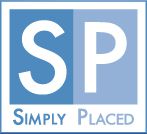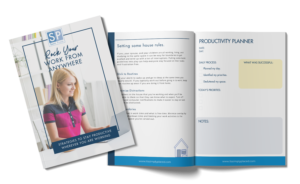
The purpose of taking notes is to remember information. For some, it is simply the act of taking the notes that commits things to memory. For others, the value of taking notes resides in being able to reference the notes later. Most people benefit from both the experience of note-taking as well as the ability to reference stored notes later. Whichever way note-taking benefits you, having organized systems for taking and storing notes is key. Organized systems allow you to effectively and quickly capture relevant information and then to easily access saved notes for the purpose of creating new material or knowledge. Unfortunately note-taking organization skills are rarely or poorly taught. It’s never too late to learn new or better organizational skills. They can be taught and you can benefit from a more organized approach to note-taking. Below we describe organized systems for note-taking as well as systems for storing notes.
Knowing and using organized systems for note-taking is an important part of being a life-long learner and being able to quickly acquire and assimilate new knowledge.
Systems for Note-Taking
There are 2 basic approaches to note-taking: linear and non-linear. We’ll discuss these more in detail below. No matter what system you adopt all notes require basic identifying information. Before you start taking notes be sure to title and date your page. If you are taking notes electronically, you might also consider adding tags or metadata that will help you find your notes later.
The linear system for note-taking is easy to use when taking notes during a lecture or when taking notes while reading. Basically it creates a hierarchical outline of the material. Linear notes capture main ideas and supporting points. The idea is to note big ideas, keywords, definitions and important facts, avoiding capturing the lecturer’s or author’s words verbatim. The linear system works well for taking notes either in handwriting on by typing.
Non-linear systems for note-taking include the Cornell Method, a system for taking notes developed at Cornell University for helping students capture better notes and glean more from them, as well as systems that capture the very non-linear experience of brainstorming. Systems for note-taking in brainstorming situations are typically referred to as mind-mapping or web or bubble diagrams. Non-linear systems for note-taking, especially mapping diagrams, are highly-visual and support the work of building connections and new knowledge.
Having skills for taking notes with both linear and non-linear systems is good because they support different types of learning and knowledge creation. Spend some time thinking about your experience with note-taking. Look at some of your notes. Do you lean toward a linear or non-linear approach? What worked well? Are you using the best system for the type of situation you’re in? Consider the ways you can improve your system for taking more meaningful and useful notes.
Systems for Storing and Retrieving Notes
Notes can be stored in hardcopy or digitally. If you take handwritten notes and want to keep them in hardcopy, your options for storing include keeping notes in a bound notebook or binder or keeping notes in a filing system. You could also take a hybrid approach and choose to store your handwritten notes in an electronic format by either taking a picture or scanning them.
There are a variety of approaches for storing notes digitally. A basic approach is to create and save notes in a text or Word document. You can have a separate document for each class, presentation or meeting or create a larger document to capture notes for recurring classes or meetings; creating a new page for each day. This is an okay approach.
However, if you really want to take advantage of the power of digital search and the ability to link related notes, consider using software specifically designed for storing and referencing information captured in notes. Of note is software for capturing and referencing mind-maps like: Freemind, XMind and MindNode. Read here to learn more about mind-mapping software. These software tools support the creation, storage and sharing of notes taken as diagrams. Other software to consider are Evernote and OneNote, basically database tools that support the organization, storage and search of notes saved as text, images, links, audio or video files. Both Evernote and OneNote work across platforms and are available for free. Both tools are versatile for organizing and referencing notes in a variety of ways. Read here to read more of a comparison of them and to better understand which software might be right for you.
Whichever system you adopt for storing your notes know that the system only works well when use it. No system will work if you don’t put your notes into it. And no system will work if you don’t adequately name, date and, when applicable, apply metadata tags so that you can quickly find your notes when you need them.
Consider tweaking your note-taking systems to improve either your ability to capture information, reference information later or both. If you have a student, think about teaching him or her how to take and use notes if these are skills not explicitly taught at school. Knowing and using organized systems for note-taking is an important part of being a life-long learner and being able to quickly acquire and assimilate new knowledge.
Do you need some support figuring out a system for taking notes that will work best for you? Do you have a student who’s struggling to make sense of information presented in the classroom or textbooks? Contact us. We offer a free 15-minute phone consultation designed to give you some quick support and actionable ideas to help get you started toward a more organized approach to note-taking.






